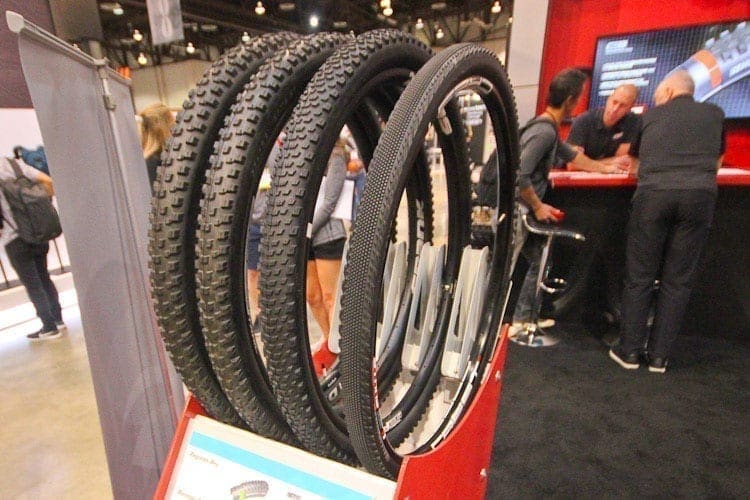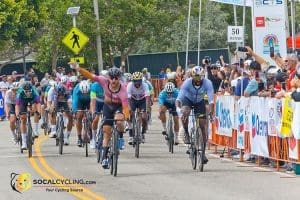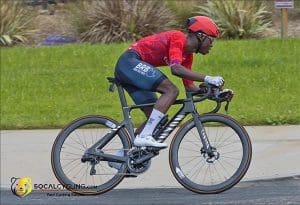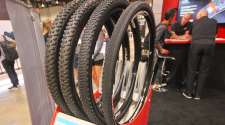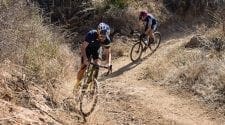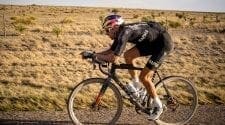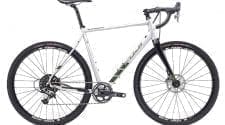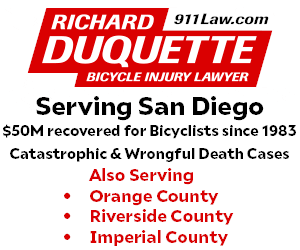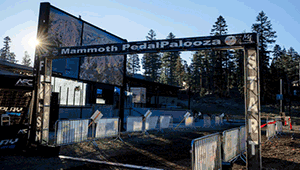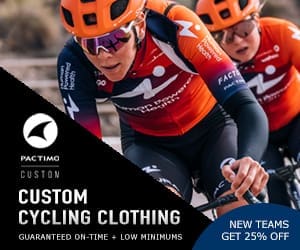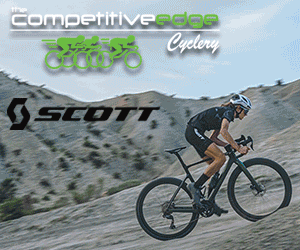Hey man… what’s the best tire for this event?
That’s something I’ve been hearing a lot over the last few months as more and more mixed surface and gravel events come on the calendar. I remember back to my full-time cyclo-cross (CX) days riding with the KCCX team and all the conversations we had about tire choice for this course with grass or that course with mud. The question was the same as then and the discussion to find the answer is very similar.
Tire Choices Are Now Quite Complex
Ever since there were knobby tires, there has been a selection of knobby tires to choose from. Each tread pattern has an intended purpose and an actual purpose depending on the rider. Choosing the “best” knobby tire has become more of an artform than anything. I’ve always envisioned a bunch of old Belgian guys sitting around smoking and drinking and dreaming up CX tread patterns to be used in the next World Cup or Super Prestige.
Gravel and mixed surface riding seems to be much newer and more trendy. Sure we’ve all forgotten about that random Roubaix race we did back in the day. This is the now and gravel is in. The bikes are amazing and the tire choice is intimidating. Relative to CX, gravel tire choice is probably more complex, simply because there are no restrictions. Fat bike? Go for it. Road bike and tires? That’s fine too. That’s also a range of about a million tread and width combinations… seemingly.
CX rules basically restrict you to a 33mm wide tire for any UCI regulated races. That’s not particularly wide, and wider tires tend to do better on an uneven surface. The result is that every racer picks a 33mm wide tire. The only question would be about tread and pressure. Not easy, but not too complex. Coach Matt writes some good stuff about CX tires here.
However, once you begin the choice of picking tires for gravel and mixed surface you get another variable – width. Nowadays we have all the complexity of tread pattern and we add tire width from 25c- 122c (4.8” fat bike). But which one is the best for you? Well, that’s the $150 question and we can’t tell you what the best tire is for you in any given situation. BUT what we can do is provide a guideline for how you choose your tire for the next event.
Establish Your Goal For The Gravel Event
First and foremost is to set your goal for how you want to perform at the event. If you want to make it through the event and not have any tire issues or flats, it’s best to go bigger and beefier than needed. The sacrifice is speed and agility. Big tires are heavy and heavy tires aren’t fast. Spare me that “get it up to speed” chatter. Tires are always accelerating due to tangential vectors and centripetal acceleration. If your goal is to race the event and rip legs off on your way to gravel glory then you’ll be striking that balance between lightness, performance, and toughness. Narrower tires are (usually) lighter but the smaller tire offers less traction. Note that “less traction” and “enough traction” are different and can overlap. Once you have your personal goal, we can move onto the variables that should impact your tire decision.
What Is The Terrain At The Gravel Event?
Terrain is probably the single most influential variable on tire choice. This is mostly due to simple physics. A skinny road/ pave based tire just simply will never be able to ride in loose sand because it doesn’t have the volume and displacement to stay on top of the sand. Meanwhile, a 47mm wide tire with knobs like the WTB Riddler 45c will grab any trail by the horns but is heavy and slow on pavement given the higher mass and more knobs. Doing some sort of pre-ride or consulting with a Gravel Coach or local guru would be prudent.
What Is Your Skill Level At For The Gravel Event?
The next variable impacting your decision should be skill level. Skill level is divided into two things, speed/ fitness and bike driving ability. Speed and fitness are key determinants to tire choice because speed changes the way tires ride and what they can do. Any course, no matter how mundane will become technical if there’s enough speed, even NASCAR. Faster speeds mean the tire has less time to deform in order to conform to terrain so maybe wider and bigger is better. But then bigger tires tend to have more tread. However, fitness enables you to use throttle to control the back end of the bike in a similar fashion to dirt bikes and feathering throttle in turns. This could enable you to properly use a smaller tire.
Bike driving ability is essential in gravel riding. Take the midwest plains roads – They’re arranged in 1-mile x 1-mile grids. Not much turning and even the fast downhills are usually in a straight line. However, compare that to the SPNDX Stampede which has fast, twisty, technical gravel descents and, all of a sudden, your driving skills are put to the test. Those speeds and your skill could demand dramatically different tire choices. Maybe wider is better, but maybe you have a background in downhill racing and a narrower is fine for your particular skill set.
How Comfortable Do You Want To Be At Your Gravel Event?
Finally, how comfortable do you want to be on the road? What are you willing to sacrifice to have that comfort? If you don’t want to feel all the bumps or jostles, wider is better especially when coupled with lower pressure. However, if you want to win the day, or just go faster and not take all day, then you’ll want a different setup. Also, how comfortable are you when tires lose contact with the road? More speed typically means more skipping or bouncing and that means you’re in the air a bit more. How comfortable are you being a projectile, even if it’s for a short amount of time?
For a real example, Coach Zack tells us how he chose his tires for Dirty Kanza 200
“For tire choices you weigh all the factors that this article lays out above. We know Kanza is in Kansas and therefore, that the course will be a grid system with the exception of a few “B” roads or animal trails. Whatever the course is, even if you have never done it before, you have to do some research on the terrain, and roads styles. Become the child geologist you left behind at age 9. Talk with your coach and others who have done the event, and use this article above as a checklist of sorts to plan your tire choice around trying to not flat on the most technical section of the ride, and not getting dropped on the fastest section.
For Kanza that means a somewhat light tubeless tire (everything is tubeless now) with a tread pattern to push some rocks out of the way and maintain traction. The average speed was around 18 miles an hour, pretty dang fast for 214 miles. If you go too big on the tire you have plenty of time to get tired while thinking about how you never flatted on the route. If you go for a gravel racing tire, narrow, fast, light, you will go from off the front on the fast straight smooth sections to waiting because it’s 214 miles and you need people to help, or flatting on the baby head rocks you hit right before the 3-foot ridable creek crossings. As far as mud, there’s really no such thing as a mud clearing gravel bike or tire. Even “mud” tires will have build up and require subsequent actions to fix that, like stopping to clear it, or looking around in the corn field next to you for a new rear derailleur after yours snaps off (you won’t find one). My tire choice was a Maxxis Rambler. Nice fast tread pattern good flat protection but relatively light for a 40mm tire. While rolling fast it was wide enough to be comfortable and rolling in for a top 10 at my first Dirty Kanza 200.”
Thanks for reading. We hope this was able to help you choose wisely and have a great ride!
About the Author: Adam Mills is currently the Performance Director of the Elevate- KHS Pro Cycling Team. He has raced at the elite level since 2002 and graduated with a Masters in Exercise Physiology from the University of Kansas in 2005. His true talent comes with his ability to combine his vast experience with his knowledge of sport. He is indeed a student of science, sport, athletic performance, strategy, and tactics. He continuously educates himself by keeping up to date with current trends and methods in sport and his clients have reaped the benefits from this work with over 13 national championships in 8 disciplines on two continents. Adam is able to incorporate these attributes on a daily basis to help his clients reach and exceed their goals whether they are a beginner or a seasoned professional. Learn more about Adam and Source Endurance.
No products found.


